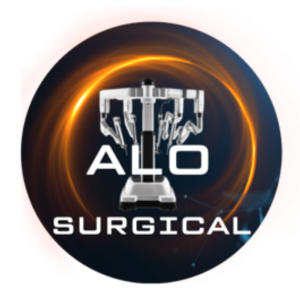
ALO SURGICAL

ROBOTIC AND LAPAROSCOPIC GASTROINTESTINAL SURGERY IN MEXICO
The key to a better quality of life and a long life, is prevention.
Your body is your home, and it’s our own responsibility to look after it.
ROBOTIC SURGERY
Robotic surgey allows surgeons to perform complex procedures with more precision, and control than with traditional procedures. It is performed through any incisions.
This system includes a camera arm and mechanical arms with surgical instruments attached. The surgeon controls the arms while seated at a control center near the operating table.
The view of the surgical site is magnified, on high-definition and 3D for the surgeon. There are many benefits for these minimally invasive procedures: quicker recovery, less risk of complications, less pain, less blood loss, and less noticeable scars. Surgeons must complete additional, specialized training to do robot-assisted procedures.

LAPAROSCOPIC GASTROINTESTINAL SURGERY
Laparoscopic technique is a minimally invasive approach for surgical procedures, in this technique, small trochars are inserted through any incisions, and trhough this trochars are inserted the instruments and camera. From the outside, the surgeon manipulates the instruments and the camera to complete the surgical procedure. The advantage of this technique is that the any incisions are less noticeable, there are less risk of complications and the recovery quicker.
Many diseases can be treated before they become a serious problem. Here are some examples on how ALO Surgical can help with many diseases with their surgical solution.

GALLSTONES > CHOLECYSTECTOMY (GALLBLADDER REMOVAL)
The gallbladder is an organ with the shape of a pear that located on the right side of the abdomen. It contains bile, that is released into the small intestine to promote digestion. Gallstones are small stones, made of bile and cholesterol, formed in the gallbladder. They can be as small as a small grain or as big as a golf ball. When gallstones become larger, or begin obstructing bile ducts symptoms occur, such as severe abdominal pain, nausea, fever, vomiting, etc. If this is not treated on time, the patient could end up in Emergency Room.

HIATAL HERNIA > NISSEN FUNDOPLICATION
GERD (Gastroesophageal Reflux Disease) is very common nowadays, and the quality of life results affected with this disease. Most of the cases are because of a Hiatal Hernia.
Hiatal hernia happens when the upper part of the stomach bulges through the hiatus, located on the diaphragm, which is the muscle that separates the abdomen and the chest. A large hiatal hernia allows food and acid to return into the esophagus, causing heartburn.
Nissen Fundoplication is a procedure by laparoscopic approach in which the surgeon tightens the junction between the esophagus and the stomach to prevent acid reflux.

ABDOMINAL HERNIA, UMBILICAL HERNIA, INGUINAL HERNIA > ABDOMINAL WALL HERNIA REPAIR
An abdominal wall hernia occurs when the muscular wall is weak or breaks and the abdominal organs begin to protrude through this space, forming a protuberance. Hernias can be dangerous when they get stuck or rotate at the weak points of the abdominal wall. They will not heal on their own and can grow over time and cause pain or intestinal injury requiring an emergency surgery.
The objective of the abdominal wall hernia repair is to accommodate the protuberance in its place and close the defective area on the abdominal wall either with stitches or, if required, with a synthetic mesh to reinforce the muscle and keep the organs in the right place. The mesh that is placed is made of a non-absorbable material. This procedure can be performed by the traditional open technique, laparoscopic technique, and some cases also with robotic technique, the last 2 are minimally invasive techniques.

DIASTASIS RECTI > LAPAROSCOPIC REPAIR OF DISTASIS RECTI
WHAT IS ABDOMINAL DIASTASIS?
Diastasis recti occurs when there is a separation between the right and left sides of the rectus abdominis muscle. AWer pregnancy, diastasis may occur due to increased tension in the abdominal wall. Diastasis can be considered an aesthetic problem since it generates a flaccid and sagginglooking belly, from which lumps can even form when exerting effort. It is also a functional problem, since it is related to pelvic floor dysfunctions, such as urinary incontinence and pelvic pain.
How do you know if you have abdominal diastasis?
By lying “on your back” with your knees bent and the soles of your feet well placed on the floor. Place one arm behind your head and with 2 fingers of the other hand touch the center of your abdomen at the level of the belly button, do an abdominal crunch, and if between the 2 muscles there is a separation of more than 2 fingers, or 2.5cm, there is diastasis recti.
Minimally invasive diastasis recti: repair
During minimally invasive diastasis recti repair, abdominal muscles are bound together with suture using laparoscopic technique, if the diastasis is width, mesh could be required. Laparoscopic abdominis recti repair consists on reinforcing the midline of the abdominal wall by joining the muscles on the left and right sides. Being a laparoscopic procedure, it does not leave the scar that an abdominoplasty would leave, since it is only entered through 3 any incisions of less than 1cm on the lowest area of the abdomen, at the level of the pubis. At the same time, umbilical hernia can be repaired.

OBESITY > BARIATRIC SURGERY
OBESITY is a worldwide problem, it is a chronic disease related to excess body fat, and it is when a person is over 30 BMI. BMI is a tool that helps to measure if someone is underweight, normal weight, overweight or obese. It is calculated relating the height with weight. If you consume more calories than the ones you can use in one day, you will increase your weight and this can lead to obesity.
Obesity is just the beginning of a bunch of diseases, it can lead to hypertension, diabetes, knee and back issues, etc. And all this conditions will lead you to a poor quality of life.
BARIATRIC SURGERY is a tool that will help you achieve your weight loss goals. This procedures are performed by laparoscopic approach, and could also be performed by robotic-assisted surgery.
There are many types of bariatric surgery:
- Gastric Sleeve
- Gastric Bypass
- Duodenal Switch
- SADIS
- Mini Gastric bypass
- Gastric Band -Revision surgery

UTERINE DISEASE > HYSTERECTOMY
Hysterectomy is a surgical procedure in which the surgeon removes the uterus. This procedure can be performed by laparoscopic or robotic approach, which are minimally invasive procedures. There are several reasons why this procedure may be required, such as uterine fibroids.
Uterine fibroids are benign tumors found in the uterus; sometimes they can become malignant. Fibroids that are very large can cause longer and more abundant menstrual periods, bleeding between periods and/or pain during sexual relations. When the symptoms are severe and the patient no longer wants to have children, hysterectomy is a good option since 100% of the fibroids are removed, eliminating the possibility of more fibroids being generated.

INTESTINAL DISEASE > INTSTINAL RESECTION
Intestinal resection is a procedure in which a part of the small or large intestine is removed due to a condition in it.
There are many intestinal conditions that can require an intestinal resection.
Here is a list of some of this conditions:
- Diverticular disease
- Intestinal polyposis
- Benign or malignant
- intestinal tumors or lesions
- Ulcers

